settings
children
With Famly since
Early years educators know how many rich, natural mathematical discussions can arise from children’s play with tyres, various sized blocks and jigsaws. But this sort of spatial reasoning is also essential for later mathematical development.
Put simply, spatial reasoning is how we understand how things (including ourselves) move and interact in relation to the physical space around them. Children engage spatially all the time, from a baby reaching for a toy to a 6-year-old judging how much paper to cut out to successfully wrap a present. There is an increasing body of research supporting the importance of early spatial reasoning in predicting later and wider mathematical achievement (Gunderson et al., 2012; Cheng and Mix, 2014; Clements et al., 2015).
In this article, I’ll go into more detail on how we support spatial reasoning in the early years, and conclude with ideas of how to integrate the statutory ‘Characteristics of Effective Learning and Teaching’ (DfE 2017) in our work with young children.
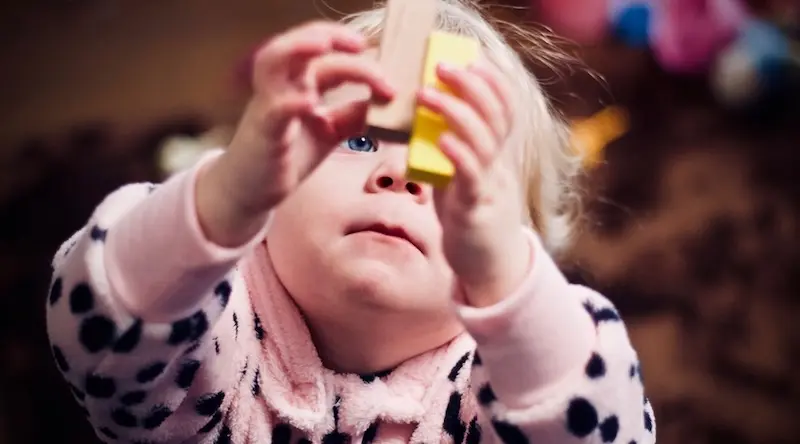
The five core aspects of Spacial Reasoning
To start, I’ll go through five core aspects of developing spatial reasoning:
Understanding relationships: – How things fit together, and how moving parts work
Babies love handling (and gnawing on) objects to see how they work, and later on, how they fit together with other objects. As children move through their first year, shape-sorters and simple jigsaw puzzles are a great way to develop core mathematical skills.
High-quality jigsaw-play, from indent puzzles, to those with many pieces, aid spatial development, particularly when an adult is there to talk about the shapes and their positions. This sort of play is especially helpful to do with an adult, who can assist the child by explaining the various shapes and their positions (Hawes et al., 2017; Schroeter, 2017).
Language: – Hearing, describing, directing position and direction
Hearing and understanding the language associated with shape and space comes first; as children follow directions such as “under” the chair or “on” the table.
Whilst children build, construct and piece together, adults can help by offering the language of spatial reasoning: “Look, here’s another straight-edge piece”, “This brick is the same shape as that one, isn’t it?”, “We could turn it around and see if it fits?” “What size do you need now?” This sort of adult questioning, and children’s exploratory language is important for children to begin to ‘see’ objects from different points of view.
Spatial memory: – Remembering where things are
Tasks or games like ‘Kim’s Game’ or ‘Pairs’ are simple memory exercises, but they help strengthen the groundwork for mathematical memory.
You and your child could play ‘Kim’s Game’ with a collection of blocks — using blocks that are the same colour but different shapes and sizes will encourage building spatial language. Or, you could find ‘Pairs’ of the same quantity by placing between 1 to 4 pennies or buttons under (similar) cups. A treasure hunt is another way of working on our spatial memory: Children can take turns to hide toys, and give clues for a partner to find the hidden items.
Sense of direction: – Noticing where you’re going, and finding your way back
Many children enjoy drawing their own maps, and tracing directions out on a map. Similar to spatial memory, building a sense of direction is useful for noticing patterns and details out in the world. At home or at your setting, you could construct and map out a landscape of cushions and furnitures, or do the same on a smaller scale, using books and boxes to make a little cityscape.
Spatial representations: – Creating mental images, understanding perspective and movements, reading models and diagrams
This is arguably the most sophisticated element of spatial reasoning, as it combines all the first four skills. Playing with toys and blocks and standing small-world characters in different positions so they can’t ‘see’ one another develops a child’s understanding of visualising an object (or collection of objects) from differing viewpoints.
Working through a set of directions for making a Lego model, following a map, and discussing what familiar objects look like from different angles are all beneficial as well.
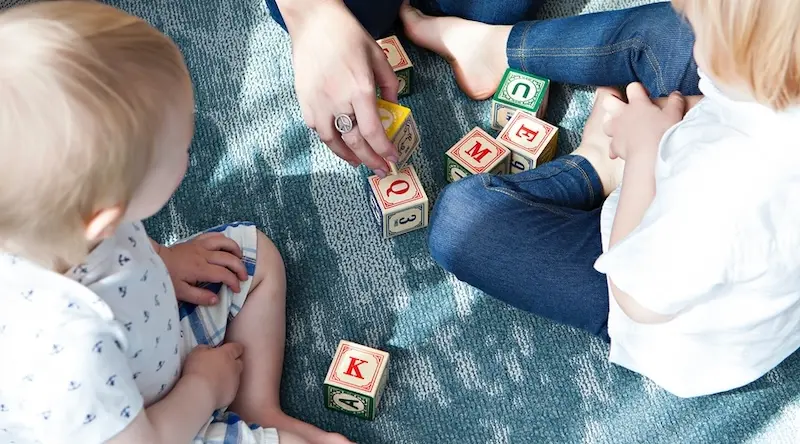
The ‘Characteristics of Effective Teaching and Learning’ in relation to spatial reasoning
These three Characteristics are statutory in the EYFS for the very good reason that they underpin how children learn effectively.
It is essential that, in addition to noticing how children exhibit these Characteristics in their play, that we think about what we say and do as practitioners to support their development in mathematics. This is especially important as we develop mathematical tasks and lessons.
- Playing and exploring – Children investigate and experience things, and ‘have a go’.
- Active learning – Children concentrate and keep on trying if they encounter difficulties, and enjoy achievements.
- Creating and thinking critically – Children have and develop their own ideas, make links between ideas, and develop strategies for doing things.
Up next, I introduce the Characteristics one by one as they appear in the statutory documentation, and underneath, you’ll find an explanation of how they relate to mathematics.
After that, we have suggestions for things practitioners can say and do in order to integrate these Characteristics in particular to encourage spatial reasoning.

1. Playing and Exploring
Children investigate and experience things and ‘have a go’.
How does it relate to mathematics?
Finding out and exploring comes from a child’s hands-on experiences and innate curiosity in size, shape, space and pattern and amount.
Being willing to have a go comes from children exploring an interest, having a ‘can do’ attitude and being willing to take a risk in trying new experiences introduced by others. It is also about beginning to realise that failures are important for learning, in mathematics as in anything.
Contexts and teaching strategies: Practitioner suggestions
- Engaging children and encouraging them to choose their own ways to do things – Noticing what children are interested in, and supporting and extending their ideas mathematically; eg filling, containing, lifting weights, fitting together, lining up, measuring, comparing…
- Adults modelling by playing alongside with bricks, jigsaws, and pattern blocks, asking: What would you like to try today with these shapes that you like?…What if I only used all the triangles?…I wonder if this pattern would cover the table top?…Let’s have a go at making your spaceship with these smaller bricks today.
- Adults modelling by making ‘silly’ suggestions that can be countered and followed up, saying: I think your brick tower will touch the sky! No? how high do you think it will reach and still stand up?
- Or by making deliberate mistakes to be corrected, saying: Here is a (square) piece that will fit there (in a round hole).
- Giving children the responsibility to solve problems and reach a goal, by encouraging planning and making decisions about how to approach a task, asking: What could/might we do? What will we need? What shall we try (now)?
- Or by encouraging children to check how well their activities are going, by reminding them of the problem, asking: What were you trying to do?…I see you have changed the distance you are moving the water from here to here?…Is this bucket going to hold it all, do you think?
- And reviewing their progress, changing strategy if necessary, asking: Do we need to start that again?…Did you find a better way of fitting those together?…How did your idea work out lifting all that sand? …Could we have built that a different way and still reached across the mat?
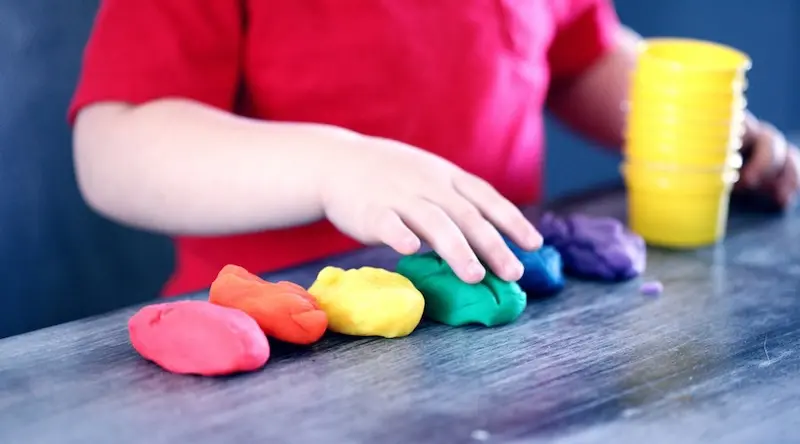
2. Active learning
Children concentrate and keep on trying if they encounter difficulties, and enjoy achievements.
How does it relate to mathematics?
Supporting children to keep on trying in the face of difficulties is as important in mathematics as in anything.
Enjoying achieving what they set out to do means a child recognises when they have met their own goals, rather than relying on the approval of others.
Contexts and teaching strategies: Practitioner suggestions
Adults can support motivation by celebrating processes, for example:
- Perseverance and persistence – You are looking very carefully about where to place each shape.
- Alternative strategies – So, you cut that out and it’s a rectangle and you wanted a square; what will you try to make it square this time?
- A range of solutions for problems – _What shall we try and build today? How shall we start this time?…If you try that and s/he tries this, we’ll see what happens!…Why not give it a try and see what happens?…You are really trying hard to balance that crate – I’m impressed!…
Are you stuck with that jigsaw? That’s OK, let’s take a look together. …You can save that and come back to it later. - Adults can also encourage children to reflect upon their results and enjoy achieving what they set out to do:Can you describe what you like about that pattern?…What did you enjoy about building that? What was harder?…What do you think about it now you have finished that jigsaw?
The big ideas
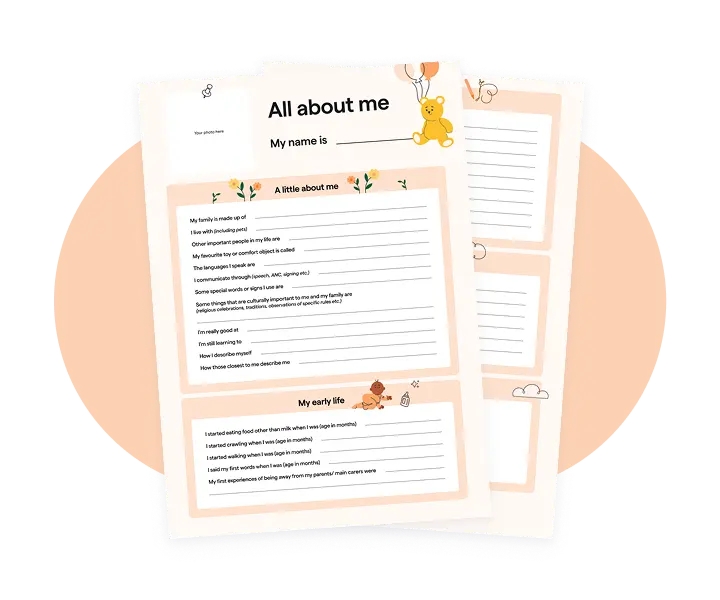
3. Creating and thinking critically
Children have and develop their own ideas, make links between ideas, and develop strategies for doing things.
How does it relate to mathematics?
Children generate new ideas and approaches to something mathematical that might have been initiated by an adult.
Children build new mathematical learning on what they might already know, they recognise links and begin to talk about cause and effect..
Children make choices and decisions about how to approach mathematical tasks, planning and monitoring what to do and being able to change strategies where necessary.
Contexts and teaching strategies: Practitioner suggestions
Adults can support children thinking through mathematical ideas by:
- Welcoming all different responses, for example with big blocks or boxes asking: What will you make? Will it be…symmetrical?…big enough for you to fit underneath?…How is this the same/ how is it different to this one?
- Modeling being puzzled, saying: I don’t know. I’m not sure. This is tricky…I wonder how they made that look like that?…I wonder if we could make a similar one?
- Making mathematical links, by noticing patterns, making wrong predictions, or making having a new idea, asking: Isn’t that game/ pattern a little bit like this game/pattern?…What can we see that is the same about these two?…I thought that would fit there! Why not, I wonder?…I think that looks a bit like this one because…What do you think will happen if we…?
- Making predictions and encouraging children to test their ideas, asking: I think you’ll need to use all those to fit right across there, what do you think?…Will those clues definitely lead me to your treasure?…Did you think you would need this larger one when you started?
- Developing ideas of cause and effect, asking: If you put that there, what will you have to put here, do you think?…What if … we use this block instead? Then what?…If you can see that from where you are, what can I see from here? What if I move over here?
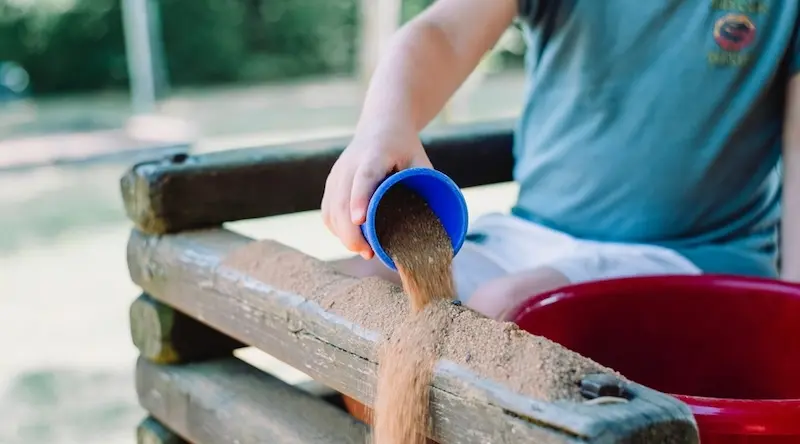
Why is spatial reasoning so crucial for mathematical development?
In order to help our youngest children get a strong start in mathematics, our early years pedagogy has to foster their intuition, memory, understanding and, most importantly, their continuing confidence.
Without these elements, our children will struggle with later mathematics, which relies on all of these, plus a large degree of creativity, in order to solve problems and reason mathematically. Ensuring we integrate the three ‘Characteristics of Effective Learning and Teaching’ whilst working on maths is an ideal way to support this.
Nurturing a safe mathematical environment, where mistakes are approached as natural and worth exploring is part of this: (“I thought that would work, as well! Let’s have another go…”). Far too often, our mathematics teaching emphasises one ‘right answer’ obtained with speed, when being able to think mathematically relies on tinkering, pattern spotting and prediction.
Although this may not have been the mathematical environment many of us experienced whilst at school, we can change this for our children by living out our underpinning belief that every child has the potential to succeed mathematically.
Dr Helen J Williams is an independent educational consultant based in Cornwall, who specialises in the learning and teaching of Early Years and KS1 mathematics. She has a special interest in working alongside colleagues developing effective playful curricula opportunities.
References
- Cheng Y. and Mix K.S. (2014). Spatial training improves children’s mathematics ability. Journal of Cognition and Development 15(1): 2–11
- Clements D.H., Germeroth C. and Brittany Sovran B. (2015). The building blocks of mathematics for infants and toddlers: An annotated bibliography for course developers. Early Educator Central.
- Department for Education (2017). Statutory framework for the early years foundation stage, setting the standards for learning development and care for children from birth to five. London: Crown. DFE-00169-2017
- Gunderson E., Ramirez G., Beilock S.L. (2012). The relation between spatial skill and early number knowledge: The role of the linear number line. Developmental Psychology 48(5): 1229–1241
- Hawes Z., Moss J., Caswell B. (2017). Enhancing children’s spatial and numerical skills through a dynamic spatial approach to early geometry instruction: Effects of a 32 week intervention. Cognition and Instruction 35(3): 236–264
- Piaget, J., Gruber, H. E., and J. J. Vonëche, (1977). The Essential Piaget. New York: Basic Books
- Schroeter E. (2017). The importance of spatial reasoning and geometry in Kindergarten. In: The Learning Exchange (accessed 1 April 2020)
Try learning journals for free
Add observations, and build digital learning journals to share with families instantly. All with your completely free 14-day trial.
Get started








